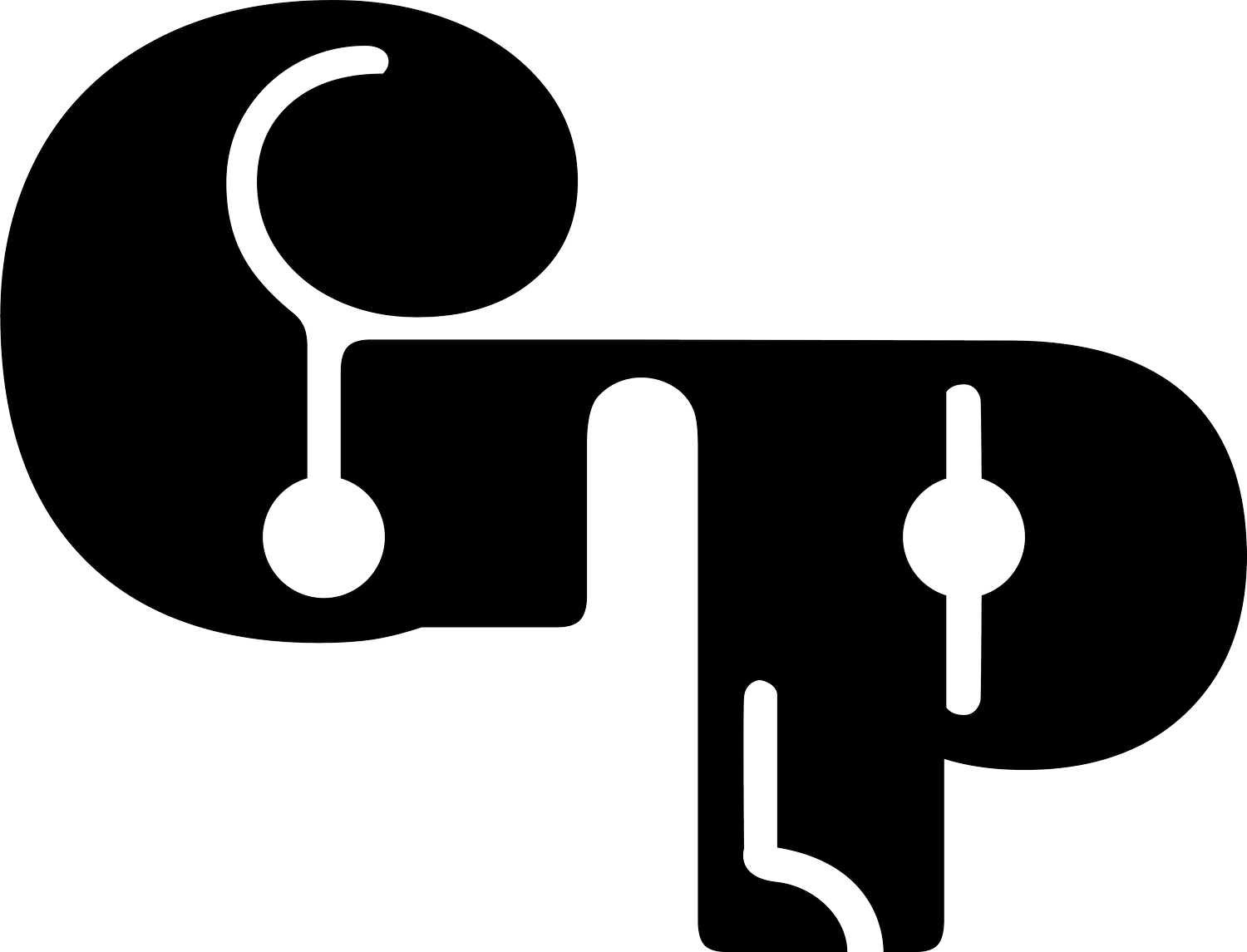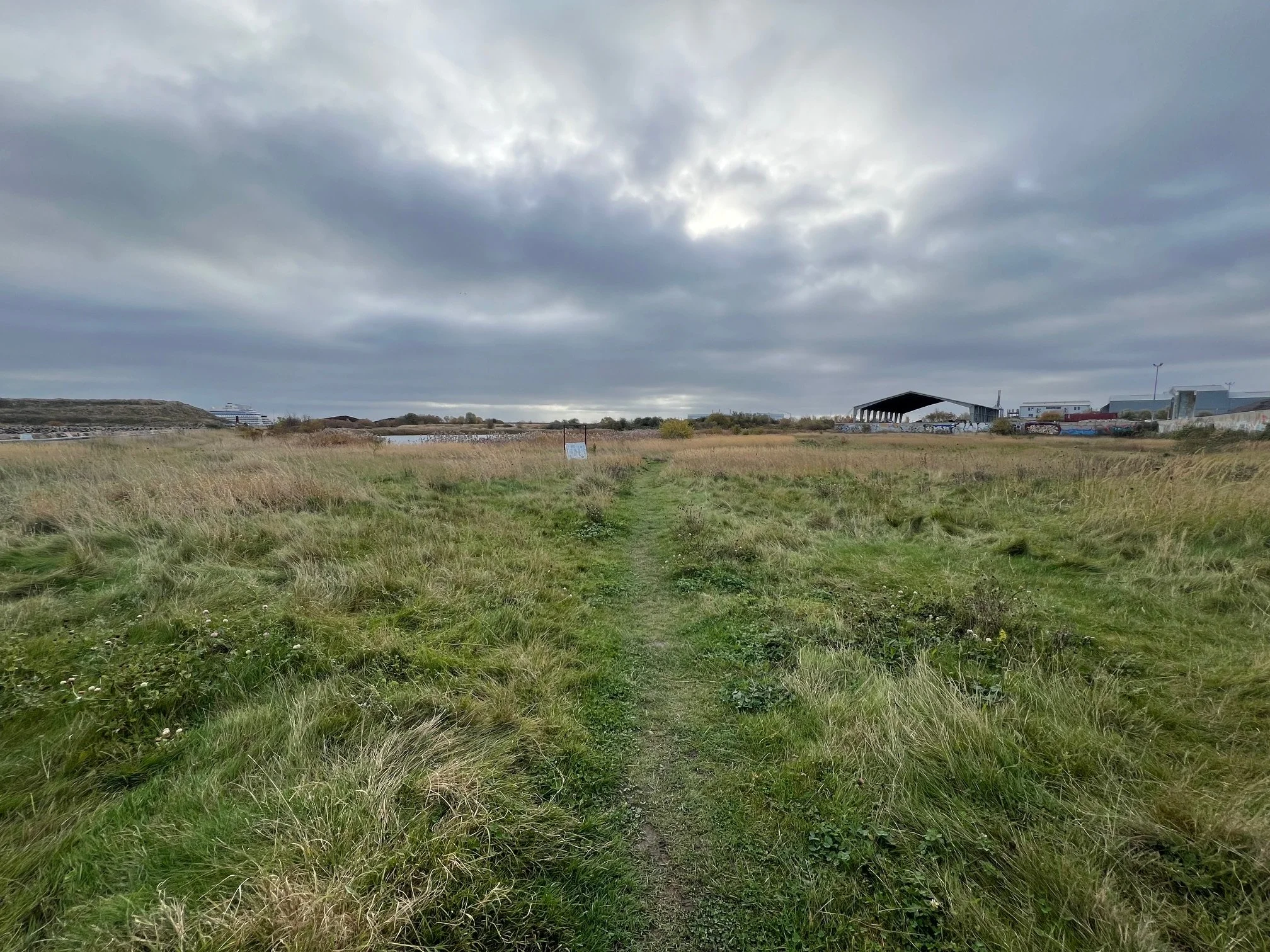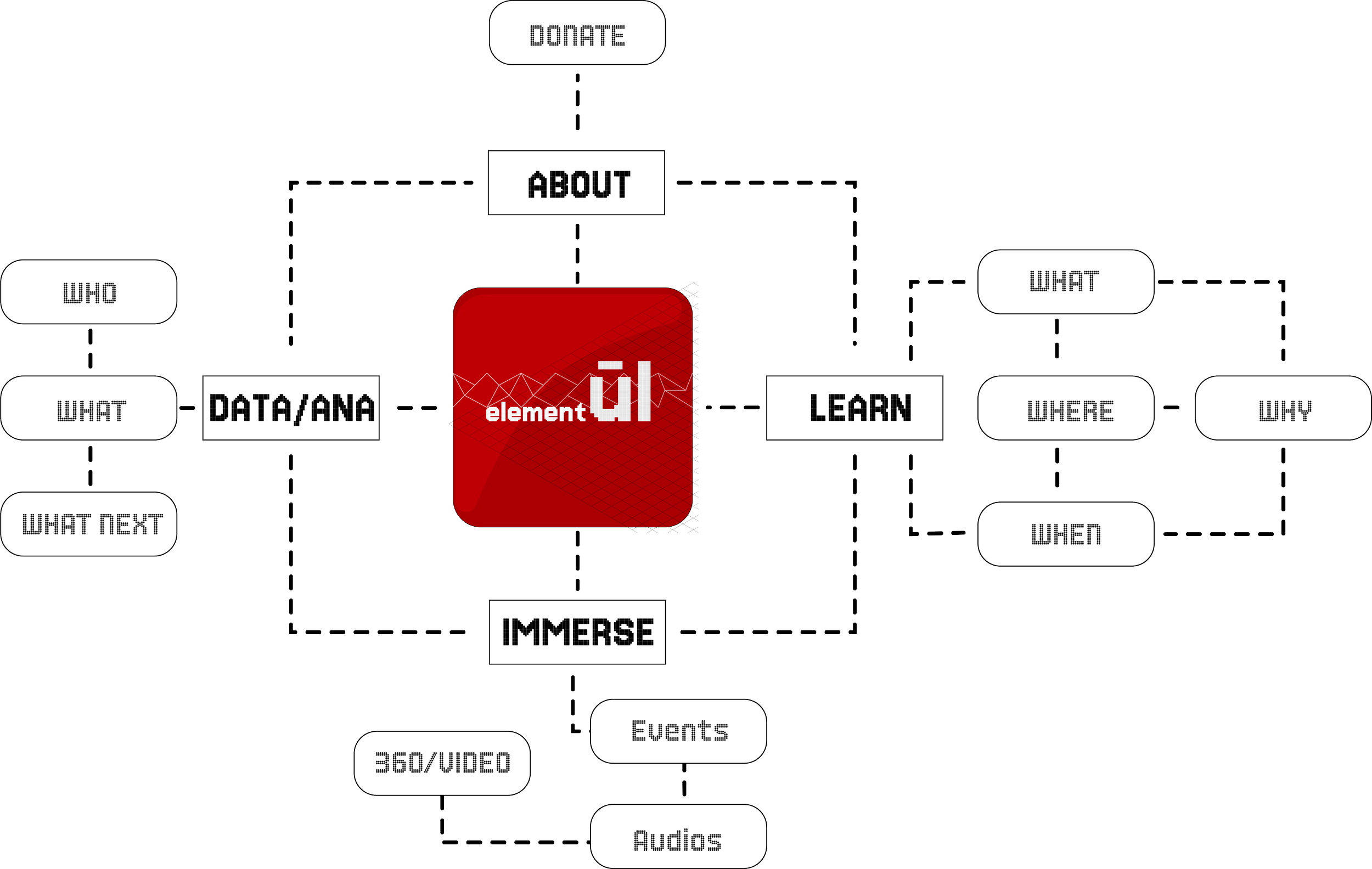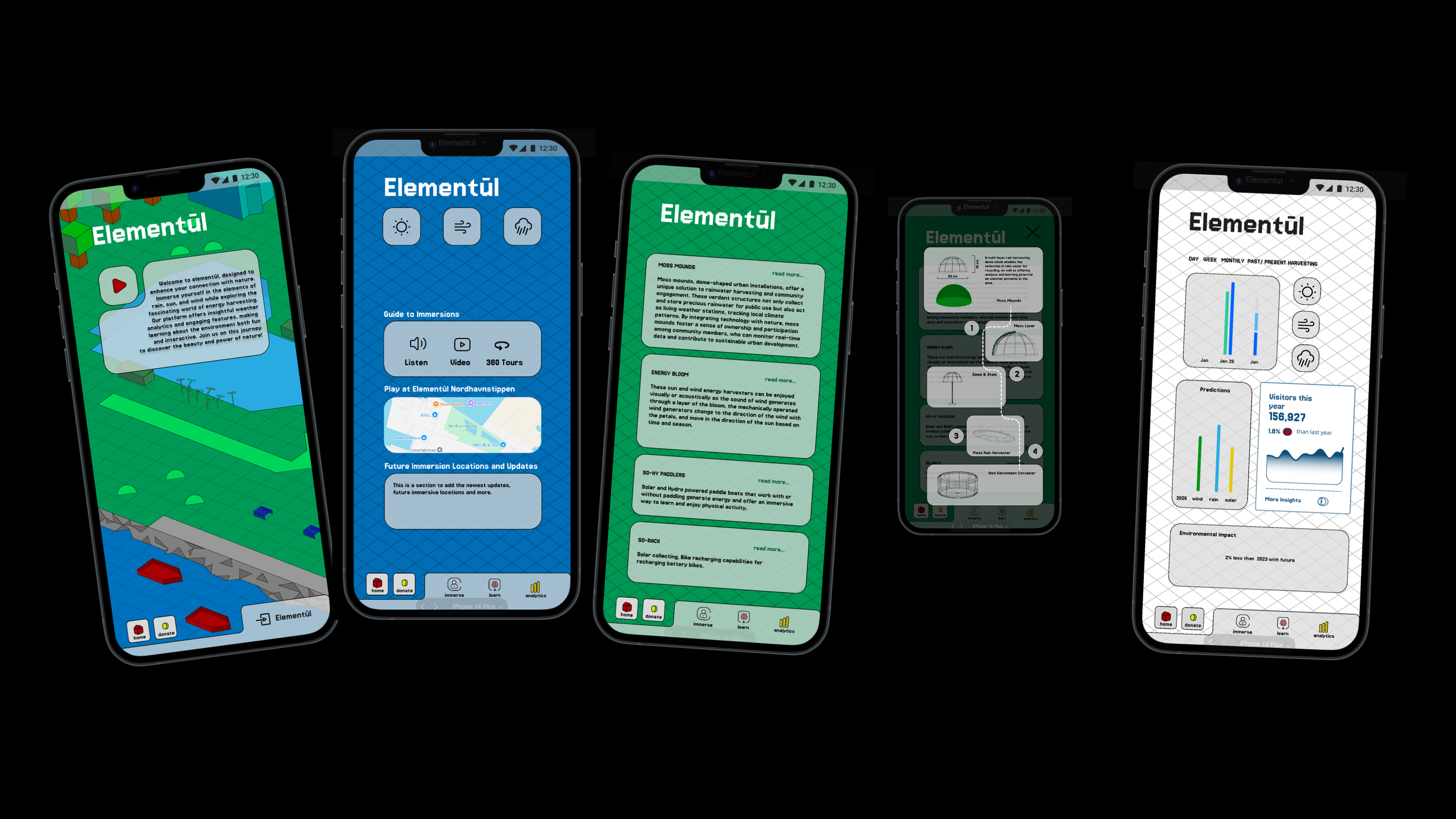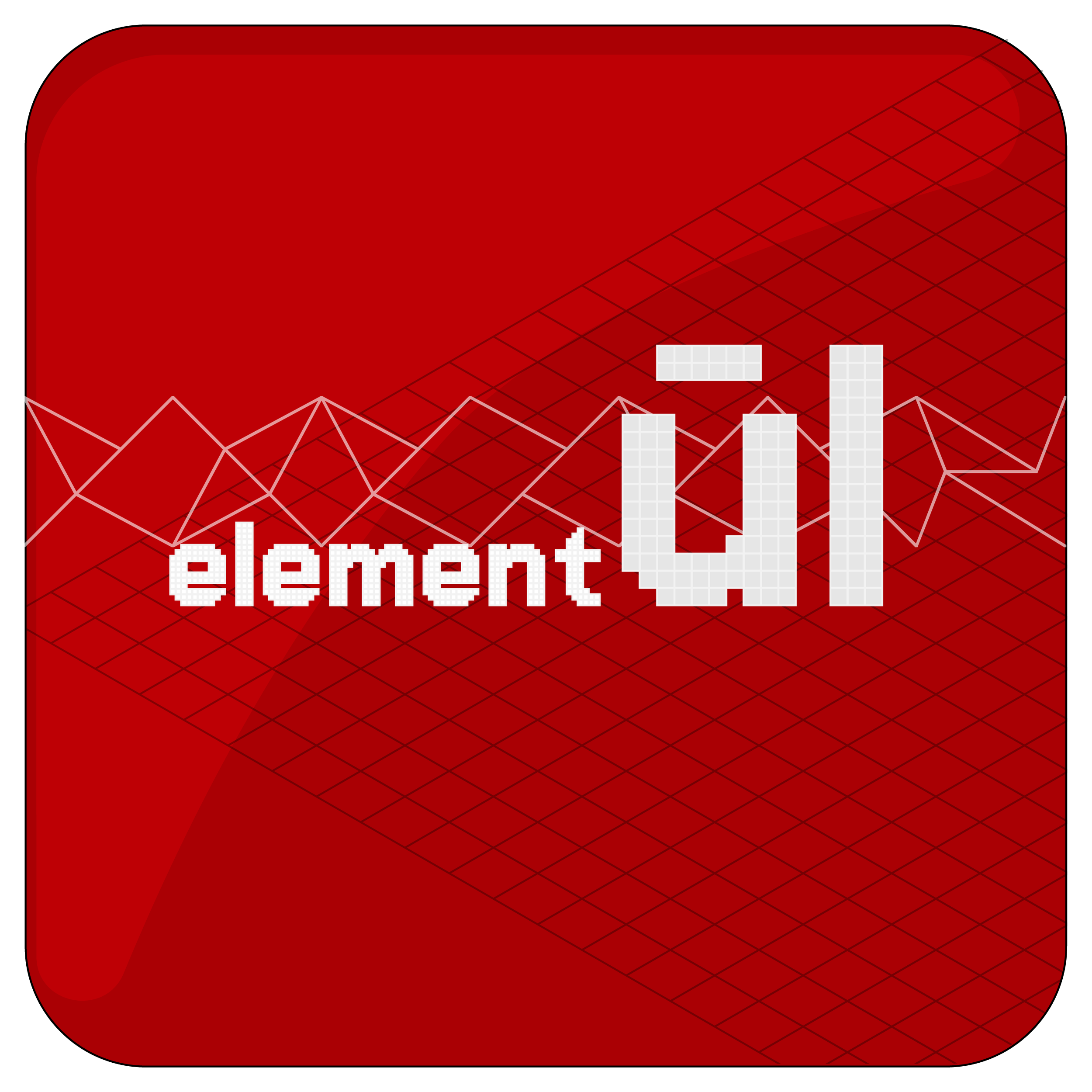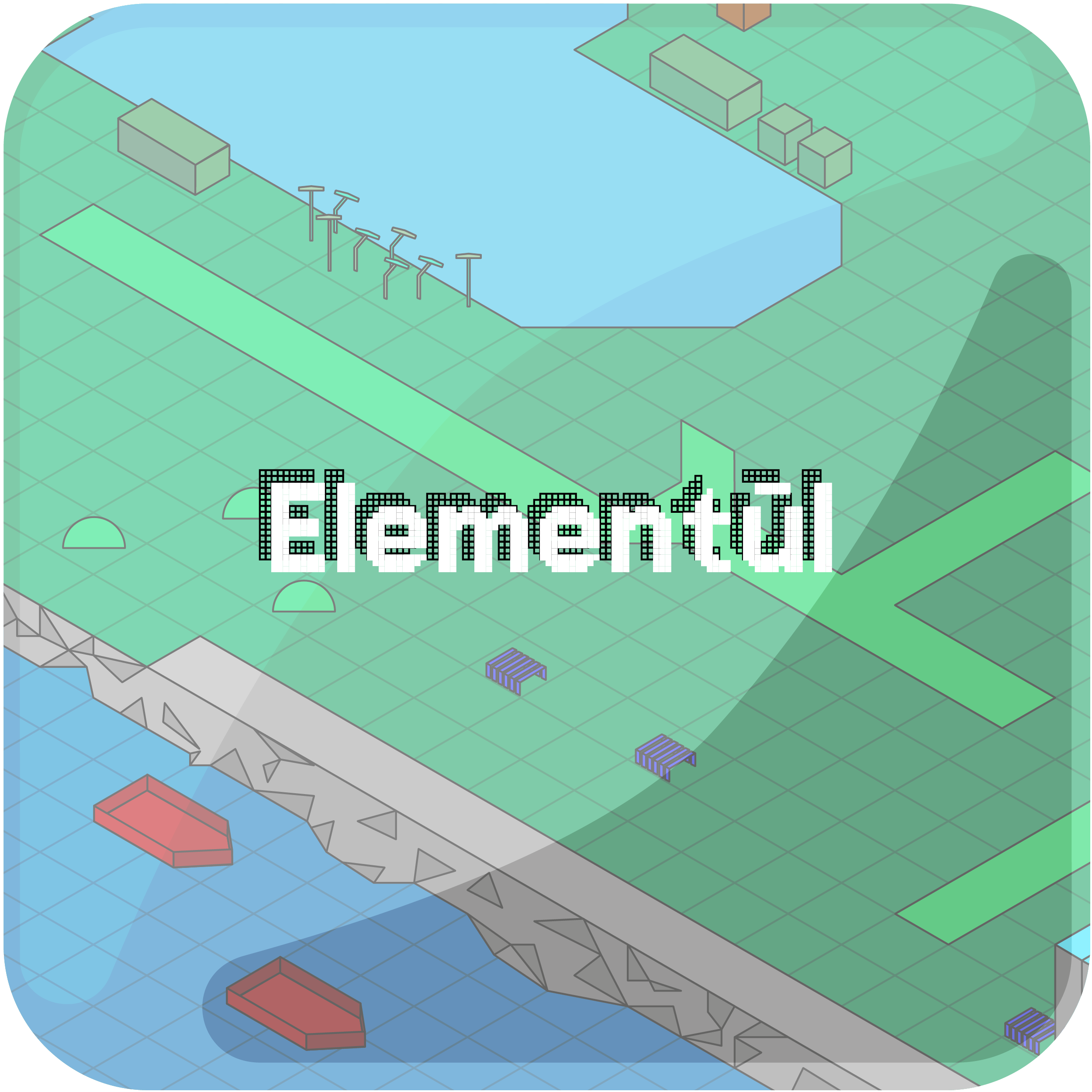
Design Strategy
Elementul is a combination of a digital app and a physical, energy-generating park located in Copenhagen. The project aims to address the city's increasing rainfall and flooding issues by integrating smart, responsive infrastructure. The app will analyze real-time and historical weather data (sun, rain, wind, etc.) to inform the park's design, which will dynamically shift its energy collection methods. The park will also revitalize an underutilized area by increasing foot traffic and enhancing local biodiversity.
The core of Elementul's design is its data-driven responsiveness. The app acts as the brain, collecting and analyzing meteorological data to inform the park's physical design and energy infrastructure. The strategy is to create a symbiotic relationship between the digital and physical spaces. For example, during a prolonged period of high sun, the park's infrastructure would automatically configure to maximize solar energy collection, deploying solar panels and optimizing their angles. Conversely, during heavy rainfall, the system would prioritize hydrokinetic and rainwater harvesting systems, channeling water through turbines or into storage for later use. This dynamic design ensures the park is always optimized for the current environmental conditions.
Elementul is a combination of a digital app and a physical, energy-generating park located in Copenhagen. The project aims to address the city's increasing rainfall and flooding issues by integrating smart, responsive infrastructure. The app will analyze real-time and historical weather data (sun, rain, wind, etc.) to inform the park's design, which will dynamically shift its energy collection methods.
Instead of building a traditional park with separate, single-purpose elements, Elementul will use integrated and multi-functional systems. The design will merge infrastructure with landscape, so that one element serves multiple purposes. For instance, the same structures that support solar panels could also serve as canopies for park visitors, providing shade while collecting energy. Similarly, a series of terraced green roofs could manage stormwater runoff, create new habitats for biodiversity, and be used as gathering spaces. This approach maximizes efficiency and minimizes the park's physical footprint.
To increase foot traffic, the park must be an engaging, interactive destination. The design will focus on user experience. The app will provide a gamified experience, allowing visitors to see the park's real-time energy generation, track their contribution to the collective energy output, and learn about the park's ecological functions. The physical space will offer diverse zones for different activities—from quiet reflective areas to open lawns for community events. Interactive installations and educational signage will provide a unique, informative experience, making the park a destination for both residents and tourists.
Structure + Prototype
Primary Logo
Secondary Logo
Elementul's dual logo approach, featuring a vibrant red and white primary logo and a calming earth-toned secondary logo, reflects the app's core mission: to be both an energetic, fun guide and a trusted source of information. The primary logo, with its dynamic zig-zag landscape design, captures the app's playful and active side. This bold, high-contrast design in red and white evokes a sense of movement and excitement.
The secondary logo, however, shifts the mood to one of tranquility and reliability. Its palette of blues, greens, and whites mirrors the natural world, subtly reinforcing the "energy park" concept and the app's informative role. This version provides a more grounded, serene feel, ideal for sections of the app that focus on educational content and data, ensuring that while the app is fun, it's also a trustworthy and stable resource.
App Logo + Design Details
Design Future
The Evolving Data Ecosystem
The app's current function as a data-driven "brain" for the park is just the beginning. In the future, Elementul could integrate with city-wide data networks, becoming a central hub for Copenhagen's smart city initiatives. Imagine the app not only analyzing local weather but also real-time traffic, public transit usage, and air quality data. This broader data set would allow the park's physical infrastructure to respond to more than just weather.
Enhanced User Experience and Gamification
The gamified experience could mature from a simple energy tracker into a full-fledged educational and community platform. The app could introduce challenges and quests, such as "Rainfall Runoff Races" where users compete to see how much water their contribution helps channel, or "Solar Scavenger Hunts" that teach them about the science of energy collection.
Scaling the Elementul Model
Perhaps the most significant development would be the replicability of the Elementul model. The app's data-driven, responsive design could be packaged and deployed in other cities facing similar environmental challenges. The platform would become a blueprint for sustainable urban development, allowing communities to design and manage their own "energy parks" that are tailored to their unique climate and urban needs.
